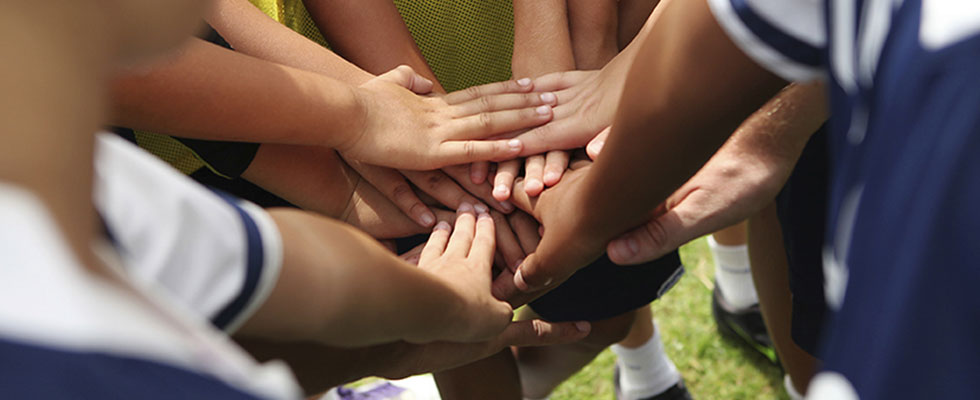State Taxation of Sports Betting Revenue Should Support Sports Programs for Underserved YouthWhile nationwide U.S. sports betting became legal in 2018, other countries around the world have had legal sports betting for years. Some, like Norway, apply the tax revenues from sports betting to support youth sports for all. Interestingly, Norway has one of the healthiest populations in the world, while the U.S. does not. Participation in youth sports, particularly for low income children, is woefully inadequate and more funding is essential. Here’s why. The U.S. Has an Obesity Problem – This past December the U.S. National Center for Health Statistics released a report on national weight gain that showed an increase among men by 8 lbs and women by 7 lbs from 2000 – 2016. Further, a 2018 study by the American Academy of Pediatrics showed overweight and obesity rates increased among children ages 2 to 19 between 1999 and 2016 – with 41.5% of teens obese by 16 to 19 years old. This study further reports that African American children, Hispanic children, and children of other races have a higher rate of obesity than White and Asian American children. America’s Youth Get Insufficient Exercise – In a 3-year study of self-reported physical activity among youth, only 5.2 percent of children reported meeting the daily goal of 60 minutes for physical activity. In addition, 49.6 percent were insufficiently active, and 5 percent reported no physical activity at all. This study’s results are borne out in research conducted by the Sports & Fitness Industry Association on youth sports participation. While the percentage of children who played one day of a team sport in a year increased slightly for the period 2011–2018 from 55.5% to 56.5%, regular participation (several times a year) in team sports declined 10%, from 41.5% to 37%. Further, with youth sports often requiring fees for children to play, children from low income families participate even less. The table below from the Aspen Institute’s State of Play 2018 report shows this participation disparity by income for children ages 6 – 12. Percentage of kids ages 6 to 12 who engaged in no sport activity during the year
High-income households ($100,000+) now take up a larger share of households with children than in 2011, according to Sports Marketing Surveys. The number of children from that population segment — which is nearly three times less likely to be physically inactive as kids from low-income homes — has pushed down the overall percentage of children who are inactive, even as the rate grew within each income category.
Not surprisingly, research from the Centers for Disease Control and Prevention shows that youth obesity is higher for low income children than those of higher income. Health Benefits of Youth Sports – People with obesity have an increased risk for high blood pressure, high cholesterol, cardiovascular disease, heart disease, type 2 diabetes and cancer. A computer model from the Global Obesity Prevention Center (GOPC) at Johns Hopkins University determined in a study published in Health Affairs that if all current 8 to 11-year-olds in the U.S. did 25 minutes of exercise just 3 times a week, it would result in 1.2 million fewer youth who are overweight or obese, which would save $62.3 billion in medical costs and lost wages during their lifetimes. Solutions for Underserved Youth – Over the past two decades, there has been a steady growth of 501c3 nonprofit organizations throughout the U.S. dedicated to combating this lack of sports and fitness programs for low income children. There are hundreds of sports-based youth development (SBYD) organizations providing low income children a wide variety of sports and fitness programs including baseball/softball, basketball, hiking, ice skating, flag and touch football, lacrosse, skiing, yoga and Zumba, to name a few. Sports Based Youth Development (SBYD) is a validated model of youth development that uses the delivery of sport intentionally and primarily to achieve positive non-sports-based outcomes. These outcomes include social emotional learning (SEL); critical pro-social relationship skills such as fair play and playing by the rules, respect for your opponent and teamwork; better academic performance and educational attainment; and improved health and wellness. These programs often include additional support services such as academic enrichment, employment training, civic engagement, health and nutrition guidance, and trauma therapy. The youth in these after school programs see measurable improvements in BMI scores, fitness, grades and school attendance. These SBYD nonprofits vary in size – from a program of a dozen children in one location, to others offering their program in several U.S. locations to hundreds, and even thousands, of children. All are financially self-sufficient through a range of fundraising sources including foundation and government grants, events, and individual donations. Insufficient Funding - A 2018 national survey by the Laureus USA Foundation of SBYD nonprofits found that 53% of the surveyed organizations reported it was difficult to raise the necessary revenues needed to operate. Another national survey of SBYD nonprofits in 2017 by the Youth Sports Collaborative Network (YSCN) found that the top three challenges these organizations faced were all fundraising related, with obtaining new sources of funding (55%), number one. Further, 51% of YSCN survey respondents also stated that they relied on no fewer than 6, to as many as 9, different fundraising sources. Further verifying the nonprofits’ fundraising challenges is the Laureus finding that 56% of the funding commitments for SBYD nonprofits were only for a single year. Allocating State Sports Betting Revenue for Youth Sports -- Sports and fitness programs are essential for all children, not just for those who can afford them. Sports betting is a “once in a generation opportunity” to provide sports access to all children, explains Tom Farrey, executive director of Aspen Institute’s Sports and Society Program. There are a variety of nonprofit sports-based youth development programs in all states in the U.S. that would greatly benefit from more multi-year funding support in order to provide their much-needed programs to additional low-income children. Given the societal need and benefits, it is fitting that revenue from state taxation of sport betting should fund these nonprofit sports programs for low income children within the state in which the betting occurs. |
||||||||||||||||||||||||||||||||||||||||||||||||||||||||||||||||


